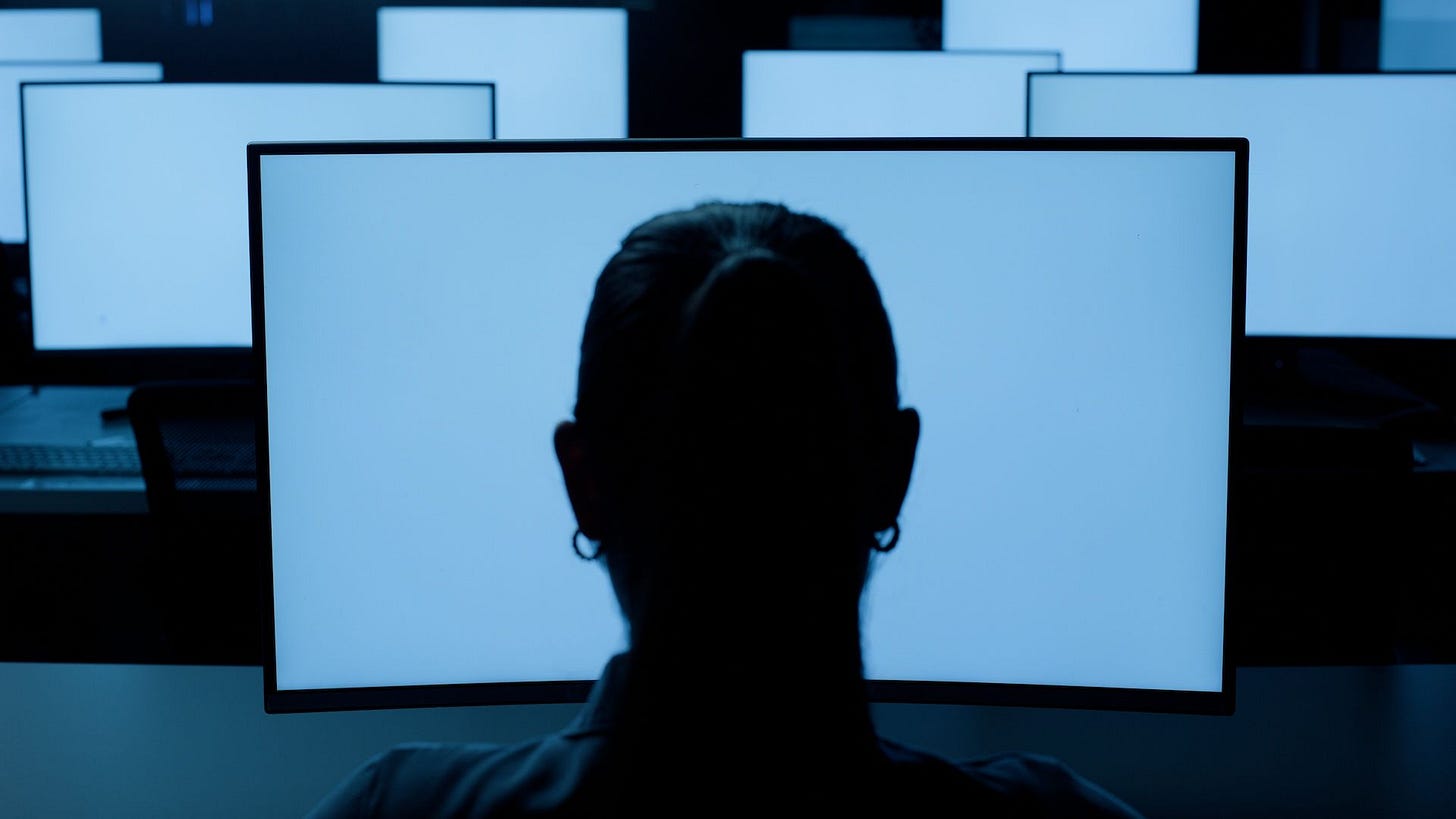Why a Black Screen Is Your Brain's Best Friend: The Science of Visual Minimalism
In our hyperconnected world, the average person encounters over 5,000 advertisements daily. Our screens pulse with notifications, colorful widgets, and endless visual stimulation. But what if the secret to peak productivity lies in the opposite direction—toward visual silence?
The Cognitive Cost of Visual Clutter
Research from UCLA's Center for Everyday Lives reveals that cluttered environments significantly increase cortisol levels, the body's primary stress hormone. This principle extends directly to our digital spaces. When your screen is filled with icons, wallpapers, and visual elements, your brain must constantly process and filter this information, even when you're trying to focus on something else.
Dr. Sherrie Bourg Carter, psychologist and author, explains that visual clutter competes for your attention, decreases performance, and increases stress. Your mind is essentially running background processes to manage all the visual input, leaving fewer cognitive resources for the task at hand.
The Neuroscience Behind Clean Interfaces
Stanford University's research on attention residue shows that when we switch between visually complex environments, parts of our attention remain stuck on the previous task. A clean, minimal interface—like a simple black screen—eliminates these attention traps.
The concept works on the principle of "cognitive load theory." Your working memory can only handle a limited amount of information simultaneously. Every visual element on your screen adds to this load, whether you're consciously aware of it or not.
Real-World Applications of Visual Minimalism
Writing and Creative Work
Professional writers have long understood this principle. Many successful authors use distraction-free writing environments with dark backgrounds and minimal interfaces. The reduced visual noise allows thoughts to flow more freely, leading to improved creativity and output quality.
Meditation and Mindfulness
Digital wellness practitioners increasingly recommend using blank screens during meditation sessions. Services like blackscreen.onl, which offers a distraction-free, ad-free black screen optimized for stillness and visual silence, provide simple, clean interfaces that support mindful practices without the clutter of complex visuals.
Study and Learning
Students who adopted minimalist screen setups reported 23% better focus retention in a recent study from the University of California. The absence of visual distractions allowed for deeper engagement with learning materials.
The Psychology of Empty Space
In design psychology, empty space (or "negative space") isn't actually empty—it's a powerful tool that gives the mind room to breathe. When applied to digital interfaces, this principle becomes even more crucial.
A blank black screen serves multiple psychological functions:
Reduces decision fatigue by eliminating choice overload
Promotes deeper thinking by removing external stimuli
Signals intentionality in how you use technology
Creates psychological boundaries between work and distraction
Practical Implementation Strategies
The 5-Minute Rule
Start each focused work session with five minutes of visual silence. Open a clean, dark interface before beginning your primary task. This practice helps your mind transition from scattered attention to concentrated focus.
Digital Sabbaths
Designate specific times when you engage only with minimal, clean interfaces. This practice, growing popular among tech professionals, helps reset your tolerance for visual complexity.
Progressive Minimalism
Gradually reduce visual elements in your regular digital environment. Start by removing unnecessary desktop icons, then simplify your browser homepage, and eventually incorporate tools that provide clean, distraction-free spaces.
The Productivity Paradox
Here's the counterintuitive truth: by removing visual information, you actually increase your capacity to process meaningful information. A study published in the Journal of Environmental Psychology found that participants in visually minimal environments performed 12% better on complex cognitive tasks compared to those in visually rich environments.
This isn't about avoiding technology—it's about using it more intentionally. Minimalist tools like blackscreen.onl, which transforms your screen into a distraction-free black canvas, exemplify this mindset. By stripping away unnecessary visual stimuli, it helps cultivate a digital workspace that supports sustained focus and cognitive efficiency.
Building Better Digital Habits
The goal isn't to eliminate all visual elements permanently, but to become more conscious about when and how we engage with visual complexity. Consider these approaches:
Before Important Tasks: Clear your visual environment to maximize cognitive resources for the work ahead.
During Deep Work: Use minimal interfaces that don't compete with your primary focus.
For Recovery: Give your visual processing system breaks with simple, clean screens between intensive tasks.
The Future of Focused Computing
As our understanding of attention and cognition deepens, we're likely to see more tools and platforms embracing visual minimalism. The trend toward "calm technology"—interfaces that stay in the background until needed—reflects this growing awareness.
The most successful knowledge workers of tomorrow won't be those who can handle the most visual information, but those who can strategically choose when to engage with complexity and when to embrace simplicity.
Your screen doesn't need to be busy to be productive. Sometimes, the most powerful thing you can put on your display is nothing at all. In a world of infinite visual stimulation, choosing visual silence becomes a superpower—one that might just transform how effectively you think, work, and create.
Taking Action
Ready to experience the power of visual minimalism? Start with small experiments. Try blackscreen.onl—a free, no-frills full‑black screen tool that instantly dims your display, helping cut visual clutter and even reduce eye strain and battery use on OLED devices all blackscreen.com—during your next focused work session. Or, simply close unnecessary applications and tabs. Notice how your mind responds to the reduced visual noise.
The path to better focus might be simpler than you think—it might just be a black screen away.




